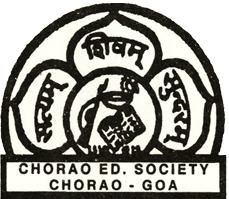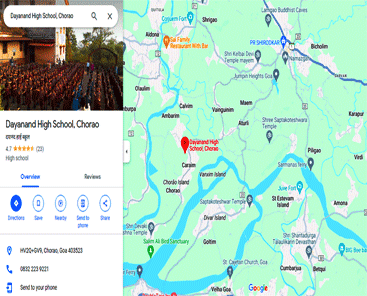Goa’s biggest gaushala is a haven for cows and goodness

On a hill in Sikeri at Mayem, over 4,000 cows find an abode in a gaushala, in tranquil serenity that can be seen in their eyes as they are cared, petted and cleaned by the staff.
The cow conjures up holiness and is one of the few animals that emanates a feeling of calm. These two attributes were hard to overlook for Kamlakant Tari, who, in 2015, after seeing two cows in distress, took it upon himself to care for them and therin started the story of the biggest gaushala in Goa.

At 61, Tari not only managed to get the late Louis D’Souza from Quitula, Aldona, to allow the Gomantak Gausevak Mahasangha to use his land for the good of cows but was able to bond the people of the village together.
Spread over thousands of square meters over the hill, the story of the cows is not difficult to understand because the vibe between men and cow is distinctly visible – a goodness manifested by divinity.

“Cows are brought in from most parts of Goa – some sick, others just abandoned. This gaushala is a home not just for cows but anyone who wants to seek the good in him or her. Many start finding that good through cows,” reasons Tari.
“The Central government has money earmarked for each cow that we are looking after but despite our care there are occasions when the money for their upkeep has not been released for even three years,” says Tari, without a sense of regret.
“Whenever you do well, with no bad intentions, good follows. I do not worry. I need around Rs 7 lakh a day for the upkeep of these animals and yet I do not think about tomorrow, because I know positivity knows its destiny,” philosophies Tari.
The gaushala receives funds from the Animal Husbandry Department of the Central Government and despite the largesse – for Tari and his team – whilst money is important, living happily far outweighs it.

The biggest problem facing cows, according to Dr Dattaraj Naik Parrikar, veterinarian at the gaushala, is what they consume when they are abandoned. “When we receive calls that a cow is refusing to eat, we know it is because it has been consuming plastic,” confesses Dr Parrikar.
The sanctuary performs many rumenotomy surgeries on cows and, “most cows respond positively seven to eight days after surgery. One surgery lasted around three and a half hours,” disclosed Dr Parrikar.
There are four gaushalas in Goa and despite the money that is available to run such centres it is the intention that matters and the 100 odd workers in Sikeri are a testimony to that.
If at one corner, one can hear the moos of the cows, in another it is melodic Indian classical music that wafts past the smell of dung and in one stable, a cow is being nursed back to health.
The cow is an economical animal as long as she is alive. Without milk, a cow helps generate revenue of Rs 20,000 a month. This is a give and take of the good between men and cow
Kamlakant Tari
“The health of the people working here is as important as the well-being of the cows and it is for that reason that I request staff to practice an hour of yoga a day and immerse in spiritual music for another,” discloses Tari whose eyes reflect happiness in solitude.
“The cow is an economical animal as long as she is alive. Without milk, a cow helps generate revenue of Rs 20,000 a month. This is a give and take of the good between men and cow,” professes Tari.
“The dung and urine of the cow is of huge value if it is processed properly. Despite not receiving crores of rupees in terms of funds from the government, we are self-sustaining because of our understanding of a cow,” explains Tari as his paternal instincts flow through the place.
Impounding of stray cattle is the mandate of panchayat and municipal councils and therefore all funds to gaushalas come through these two bodies. Yet , according to Dr Parrikar, money flows in trickles.
Tari and his crew have, through the years, developed making blocks, cakes and pellets out of dung that can be even used as pyre for Hindu funerals today. “Now we don’t need to cut a tree for a pyre. Our dung cakes are enough,” he says with a smile and adds, “The government needs to educate the people about this.”
From dung for fire to cow urine for soaps and medicinal values, Tari and his team have taken sustainability of cows to another level – one that shows goodness in another colour.
SOURCE OF INFORMATION & CREDITS: https://www.gomantaktimes.com/news/goa/goas-biggest-gaushala-is-a-haven-for-cows-and-goodness?utm_source=izooto&utm_medium=push-notification






